My Dad gave me his old winter tires to use this year, but one is completely flat! How do I inflate them?
Will Baldwin · Answered on Nov 09, 2021
Reviewed by Shannon Martin, Licensed Insurance Agent.
That’s very nice of your Dad, winter tires are a smart decision!
The first thing you’ll want to do is inspect the tire for damage. Since the tire is flat, you’ll want to ensure it’s possible to fix any damage. If it is, you have a couple of options. The first is a basic repair kit or remove the tire from the rim and patch it.
If the air is holding at the correct pressure, you should be ready to go!
Something else that could help prepare for winter is a roadside assistance membership with Jerry.
Jerry’s membership provides you with industry-leading roadside assistance, including benefits like towing, lockout service, and a mechanics hotline. To find out if you’re eligible, you can check the app or call one of our friendly agents. You may qualify for a special rate of $50 for your first year!
MORE: What to do if your tire blows out?
Car MaintenanceCar OwnershipCar RepairCar Tires
View full answer
WHY YOU CAN TRUST JERRY
Jerry partners with more than 50 insurance companies, but our content is independently researched, written, and fact-checked by our team of editors and agents. We aren’t paid for reviews or other content.
Browse More Content
Driveshaft Lubrication Cost
Power Steering Fluid Service
Drive Belt Tensioner Replacement
What To Do If Your Oil Is Leaking into Spark Plug Well
Vent Oil Separator: Replacement Cost
Chevrolet Camaro Z28 Insurance Cost
Dodge Intrepid Es Insurance Cost
Tesla Model Y Insurance Cost
Saturn Sw1 Insurance Cost
Honda Civic Se Insurance Cost
Lake Frederick Car Insurance
Dolores Car Insurance
Dry Ridge Car Insurance
Pine Bluff Car Insurance
Dorchester Center Car Insurance
I haven’t fully vacuumed my car since I bought it. I know there are crumbs lurking between my seats. How can I vacuum between my car seats?
I know there are crumbs lurking between my seats. How can I vacuum between my car seats?
Will Baldwin
Nov 09, 2021
I live in a rural area and the closest bank is about 45 minutes away. I want to get a car loan, but I don’t want to go through the hassle of going to the bank several times. Where can I apply for a car loan online?
Eric Schad
Nov 09, 2021
I’m a frugal person, so I don’t like paying more than I have to for just about anything. I’m in the market for a new car and I want the best interest rate possible. How do I get a low APR on a car loan?
Eric Schad
Nov 09, 2021
Browse All Questions
Find instructions for replacing the radio in a 2012 Nissan Altima here, plus tips to protect your sound system and save on insurance.
Kathryn Mae Kurlychek
Sep 28, 2022
The 2022 Toyota Venza comes with five seats and does not offer a third row of seats.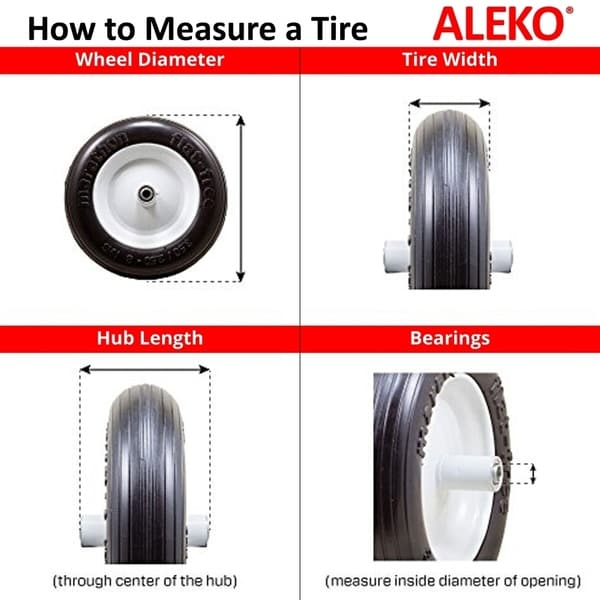
Kathryn Mae Kurlychek
Sep 22, 2022
The street cred you get by driving a 2014 Cadillac Escalade makes it easier to ignore some of its interior shortcomings.
Kathryn Mae Kurlychek
Aug 30, 2022
road safety
National General
Elephant Insurance
Uninsured Motorist Protection
Gap Insurance
Rental Car Insurance
Insurance Shopping
Car Modifications
Mileage
Crash Test Ratings
Grundy Classic Car Insurance
Acts of God
Metromile
Nevada
Flood Insurance
Subrugation
Electric Vehicles
All-Wheel Drive (AWD)
Auto Loan Payments
Direct Auto Insurance
Car Damage
Jumpstarting
Chrysler
Swyfft Insurance
Penalties
Distracted Driving
Safeco
Emergency Brakes
No long forms
No spam or unwanted phone calls
Quotes from top insurance companies
Find insurance savings — it's 100% free
Toyota
Hyundai
Mercedes-Benz
Subaru
Chevrolet
Mitsubishi
You never know when you may experience a flat tire. It can happen to anyone at the most inconvenient time. Maintaining correct tire pressure affects a tire’s wear and improves its performance. Luckily, you can easily inflate almost any tire at your job site if you have an air compressor. Read on to learn how to use an air compressor on your flat tire.
It can happen to anyone at the most inconvenient time. Maintaining correct tire pressure affects a tire’s wear and improves its performance. Luckily, you can easily inflate almost any tire at your job site if you have an air compressor. Read on to learn how to use an air compressor on your flat tire.
You need to know how much air pressure must go into the tire. Most construction vehicles need at least 100 pounds per square inch, or PSI, in each tire. The exact amount might vary depending upon the axle load, number of tires per axle, and weather. Check the vehicle’s owner’s manual for the proper tire pressure amount.
Avoid using the PSI number found on the tire’s sidewall since that expresses the maximum amount of pressure. You need this information to know what type of air compressor to get. A smaller air compressor tank keeps the pressure between 100 to 150 PSI.
A tire gauge can tell you how much compressed air your tires need to have added.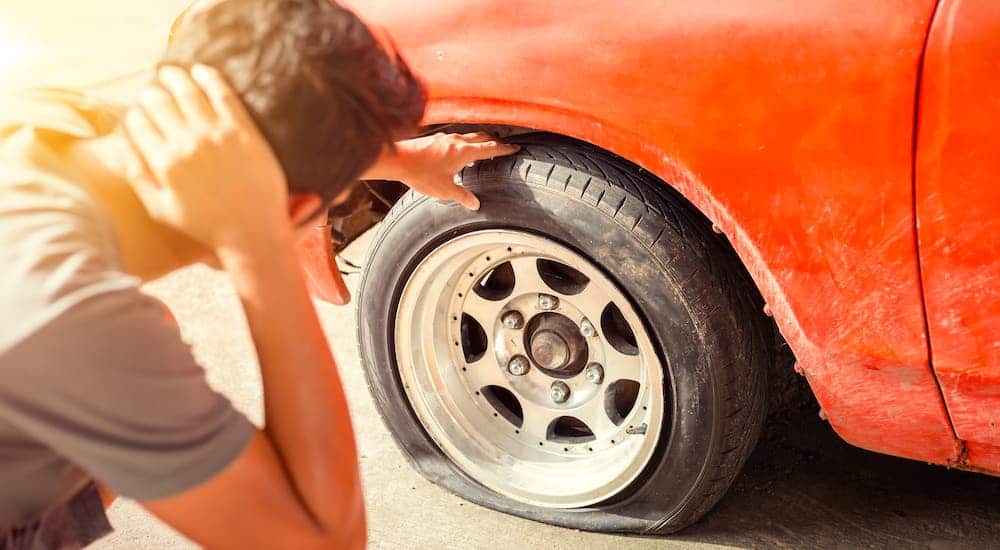 If you put too much air into tires, you can experience performance and handling issues. If you don’t put enough air into the tires, they can experience extra friction that raises the rubber’s temperature. Heat is harmful to tires and can cause damage to the steel cords inside. Many tire manufacturers state that for every 3 PSI below the recommendation, you burn 1 percent more fuel and add 10 percent extra tire wear.
If you put too much air into tires, you can experience performance and handling issues. If you don’t put enough air into the tires, they can experience extra friction that raises the rubber’s temperature. Heat is harmful to tires and can cause damage to the steel cords inside. Many tire manufacturers state that for every 3 PSI below the recommendation, you burn 1 percent more fuel and add 10 percent extra tire wear.
When filling up the tires, try to do so when they’re cold. Cold temperatures can give you a more accurate reading. Hot tires show higher air pressure when you use the tire gauge. If you get a flat tire while driving, wait about 30 minutes for the tire to cool. If this is not an option, inflate the tires to 3 PSI over the recommended amount.
Each tire should have a stem cap screwed to the top of the valve stem. Remove the cap and put it to the side, but make sure you don’t misplace it. When the cap is off the valve, even if it’s just for a minute, some of the leftover air could escape. Avoid removing the cap until you’re ready to use the compressor.
Avoid removing the cap until you’re ready to use the compressor.
Typical air compressors run on electrical power. Plug in the air compressor to let it accumulate with air. Smaller units have a two-prong plug, while medium and larger compressors may need a three-prong plug. Make sure you’re using outlets with the correct voltage for the compressor. Running the compressor on the wrong circuit can blow the compressor, circuit, or both. Once you turn on the compressor, you will hear the compressor motor begin to work. Portable units have tires, so you can easily move them around.
Try to situate the compressor near the flat tire since you cannot move the vehicle. Attach the air hose to the compressor and include the quick coupler at the end. This fastener lets you push air into the valve stem. If there’s a safety position on the nozzle, make sure that you activate it. Secure the hose to the valve stem and turn on the machine.
Depending upon how flat the tire is, filling the tire up with air may take some time.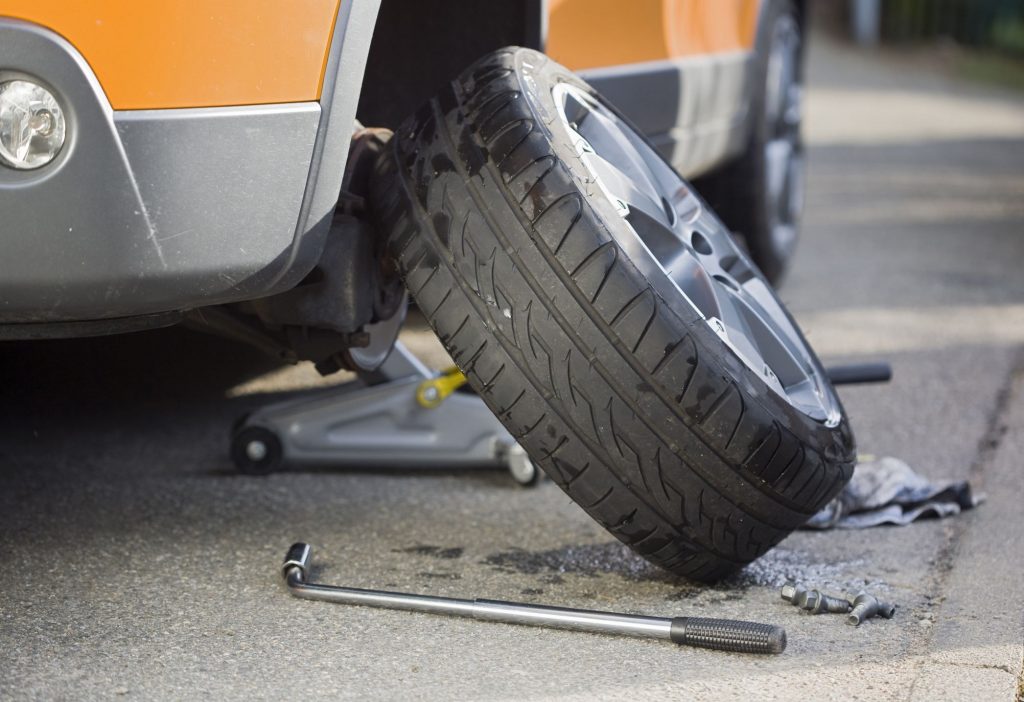 Many air compressors have gauges that guide you, so you add the correct amount of air. Some inflators even turn off automatically when the desired air pressure is reached. Digital inflators are another option, and they give you a more accurate reading. Avoid walking away from the compressor while it is running, as you don’t want the tires to overinflate.
Many air compressors have gauges that guide you, so you add the correct amount of air. Some inflators even turn off automatically when the desired air pressure is reached. Digital inflators are another option, and they give you a more accurate reading. Avoid walking away from the compressor while it is running, as you don’t want the tires to overinflate.
While filing up the tire, check the tire pressure occasionally. Most digital inflators automatically monitor the pressure and shut off when the desired pressure is reached. If you accidentally add too much air, push down on the tire gauge to release some of the air. When you have the right amount of air, remove the hose from the compressor. You might hear a hissing noise when you remove this piece. Don’t worry as this is perfectly normal. Put the stem cap back on the valve.
If you are unlucky enough to experience a flat tire, don’t worry. You can easily use an air compressor and a few simple tools to inflate the flat tire. By following a few simple tips, you can get back on the road in no time.
By following a few simple tips, you can get back on the road in no time.
Vladimir Gavrilov
Estimated reading time: 5 minutes
60774
Category: Service Auto
The vast majority of car owners, when connecting the compressor, remember the numbers serrated in the classroom at a driving school: you need to inflate the wheels up to 2.0 atmospheres. Indeed, these data are valid for the vast majority of domestic cars, manufactured 90's with 13" rims.
However, much has changed in the automotive industry over the past years, and not every tire size can work with such pressure.
The domestic market sells a huge range of wheels and tires designed for different manufacturers, requiring special conditions for operation and maintenance.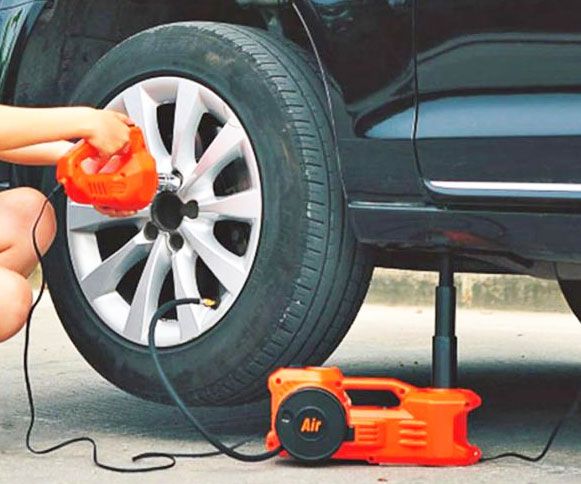 For example, some tires cannot be pumped because of the risk of losing the tread geometry, while others, on the contrary, do not like low pressure and begin to lose part of the surface layer due to increasing friction. Where can I get information about these features? Is it really necessary to open reference books and look for data in complex sheets of specifications for the range of wheels and tires sold in Russia before visiting the workshop? Fortunately, automakers have prepared an extract-cheat sheet from the car's owner's manual, which sets out the basic requirements for certain wheels. It is attached to the body of the car and is located in the area of the door pillars or on the back of the gas tank hatch. The plate is coated with a layer of lacquer, so that the data on it remain throughout the entire life of the vehicle. nine0005
For example, some tires cannot be pumped because of the risk of losing the tread geometry, while others, on the contrary, do not like low pressure and begin to lose part of the surface layer due to increasing friction. Where can I get information about these features? Is it really necessary to open reference books and look for data in complex sheets of specifications for the range of wheels and tires sold in Russia before visiting the workshop? Fortunately, automakers have prepared an extract-cheat sheet from the car's owner's manual, which sets out the basic requirements for certain wheels. It is attached to the body of the car and is located in the area of the door pillars or on the back of the gas tank hatch. The plate is coated with a layer of lacquer, so that the data on it remain throughout the entire life of the vehicle. nine0005
As a rule, on passenger cars with wheel size R16, the front tires are now inflated to 2.2 bar. The rear wheels are pumped up depending on the load. With a fully filled car with five passengers and a load, the pressure must be increased to 2.4 atm. If there are fewer people in the cabin, then the pressure is selected based on the intermediate values \u200b\u200bgiven on the plate.
With a fully filled car with five passengers and a load, the pressure must be increased to 2.4 atm. If there are fewer people in the cabin, then the pressure is selected based on the intermediate values \u200b\u200bgiven on the plate.
Such precise data is needed to set up the car for economical driving with the maximum reduction of harmful emissions. The driver can lower or, conversely, pump up the wheels, depending on how many passengers and luggage he wants to take on board. nine0005
Low profile tires of large diameters R18, R19, R20 with a profile height of 50 percent or less require much more pressure. Such tires must be inflated to 2.5 bar. And the rear wheels can be filled up to 2.7 bar.
For large SUVs with all-wheel drive with traction priority to the rear wheels, it is necessary to inflate the tires even more. Low-profile sports tires R18 and R20 for SUVs work well only at 2.8-3.2 bars. Naturally, if you fill them in the old fashioned way by 2.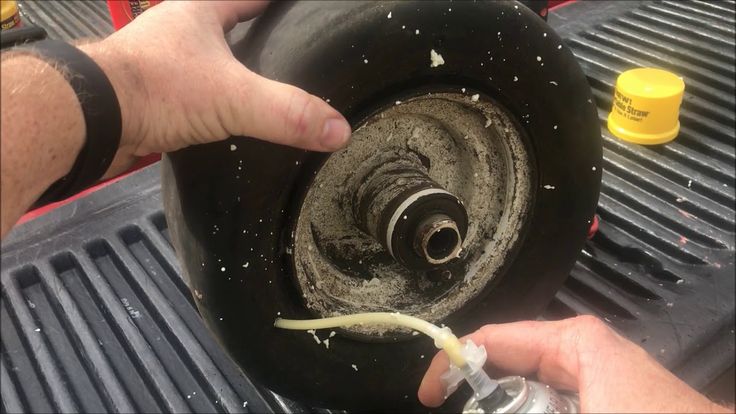 0 atmospheres, then the car will not have the calculated handling. While driving, increased tire wear will be observed and fuel consumption will increase. nine0005
0 atmospheres, then the car will not have the calculated handling. While driving, increased tire wear will be observed and fuel consumption will increase. nine0005
In general, the wheels on the same axle should have the same pressure, and the rear tires usually inflate 0.2-0.5 atm more than the front ones. To find out the exact data, when visiting the workshop, it is still better to look at the plate at the door pillar.
The maximum allowable tire pressure can be found on the wheel itself. It is indicated on the sidewall next to the speed marking. They can be given in different units. One atmosphere is equal to one bar (Bar) or 100 kilopascals (kPa). However, this data only expresses the durability of the tire, without taking into account the technical characteristics of the machine and its weight. nine0005
Non-standard tires sometimes work differently than regular ones. If the pressure is insufficient, the tire tread will wear off on the sides, and the middle will remain intact, which leads to a malfunction of the tire and a decrease in its grip due to drainage.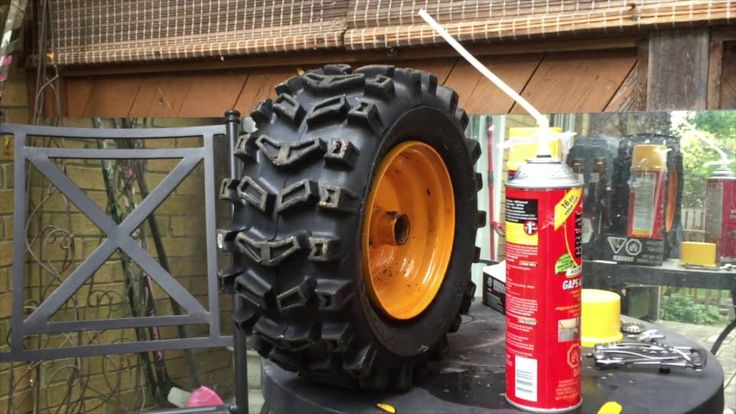
Some drivers try to inflate tires to reduce fuel consumption. Indeed, in this case, the contact patch is reduced, and the car spends less energy on friction when driving on asphalt. With inflated tires, the savings increase by about 10%. However, in this case, the wheels brake much worse and can break into a skid when cornering. In addition, they also experience increased wear due to improper tread operation. The middle part of the tire wears out, but the sidewalls remain intact. nine0005
However, there are situations in life when drivers justifiably use non-standard tire pressures. In snow and ice, you can lower the tires to 1.0-1.5 atmospheres and move at a speed of no higher than 50 km / h in order to increase the grip of the wheels and reduce the likelihood of slipping. In addition, flat tires help overcome sandy or muddy areas off-road. However, after driving through a difficult section, it is necessary to immediately pump up the wheels to standard values.
 Why is uneven tire wear dangerous? →
Why is uneven tire wear dangerous? → tirescar maintenancetips for motorists
Next article
Media news2
1 What is RunFlat?
RunFlat is translated into Russian as “flat driving” or driving on a flat tire.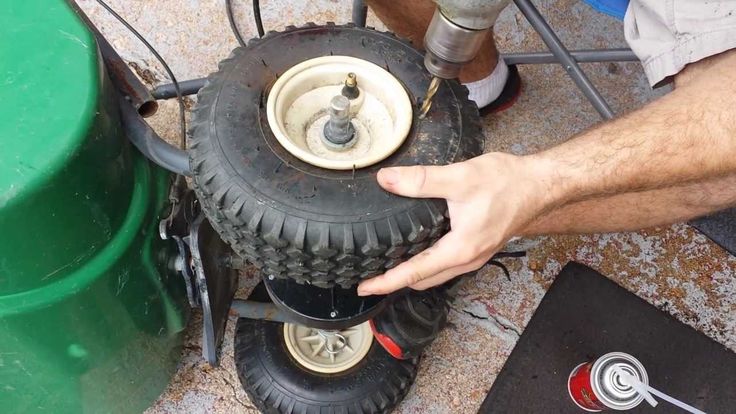 Tire manufacturers use different technology designations (example: Goodyear RunOnFlat, Bridgestone RFT, Michelin ZP, Continental SSR, Pirelli Run Flat, Dunlop RunOnFlat, Nokian Flat Run, Yokohama ZPS, Kumho XRP).
Tire manufacturers use different technology designations (example: Goodyear RunOnFlat, Bridgestone RFT, Michelin ZP, Continental SSR, Pirelli Run Flat, Dunlop RunOnFlat, Nokian Flat Run, Yokohama ZPS, Kumho XRP).
2 What are RSC tires?
RunFlat System Component is a single designation for all RunFlat tires installed on BMW vehicles.
3 What is the difference between Run Flat tires and regular tires?
4 How RunFlat Tires Work?
RunFlat technology is based on the concept of reinforced tire sidewalls. When a conventional tire deflates, it simply sags under the weight of the car, the beads move away from the rim and the sidewalls flatten onto the road. The weight completely destroys the tire in a few kilometers. Reinforced sidewalls of RunFlat tires keep the tire on the rim and successfully support the weight of the car after a puncture and complete loss of pressure. At the same time, all dynamic vehicle security systems such as ABS, ESP, DSC, CBC, etc. remain active. nine0005
Reinforced sidewalls of RunFlat tires keep the tire on the rim and successfully support the weight of the car after a puncture and complete loss of pressure. At the same time, all dynamic vehicle security systems such as ABS, ESP, DSC, CBC, etc. remain active. nine0005
5 How many kilometers and at what speed can you drive after a puncture?
The maximum run-flat distance depends on the tire manufacturer and operating conditions (50-150 km) The maximum vehicle speed is 80 km/h.
6 What are the differences in RunFlat technology between tire manufacturers?
7 Are there conditions for the use of Run Flat tires?
Without a tire pressure monitoring system installed, the operation of RunFlat tires becomes extremely dangerous, because the driver may not feel the loss of pressure in the tire and continue to move without speed limits, making sharp turns and maneuvers.